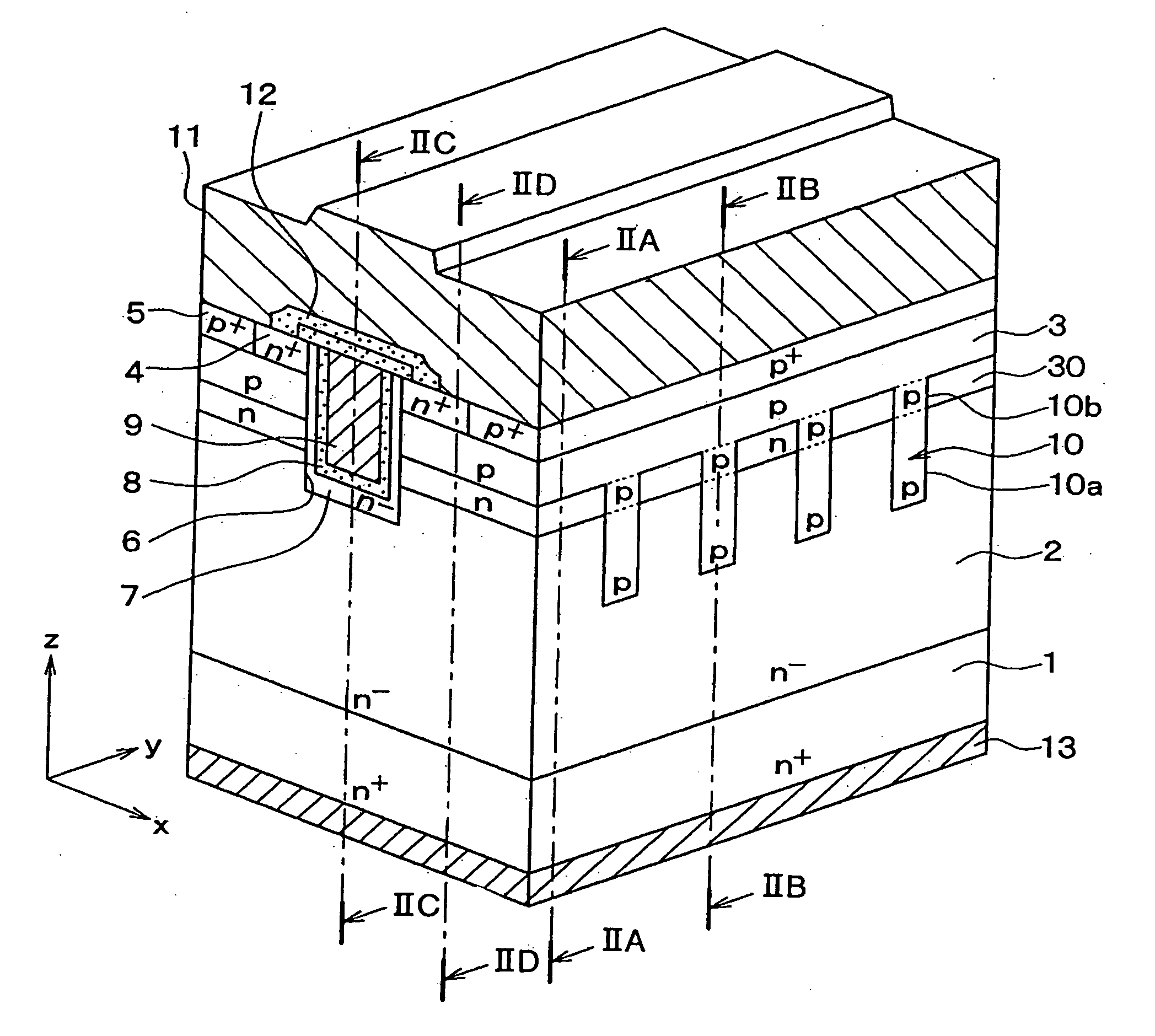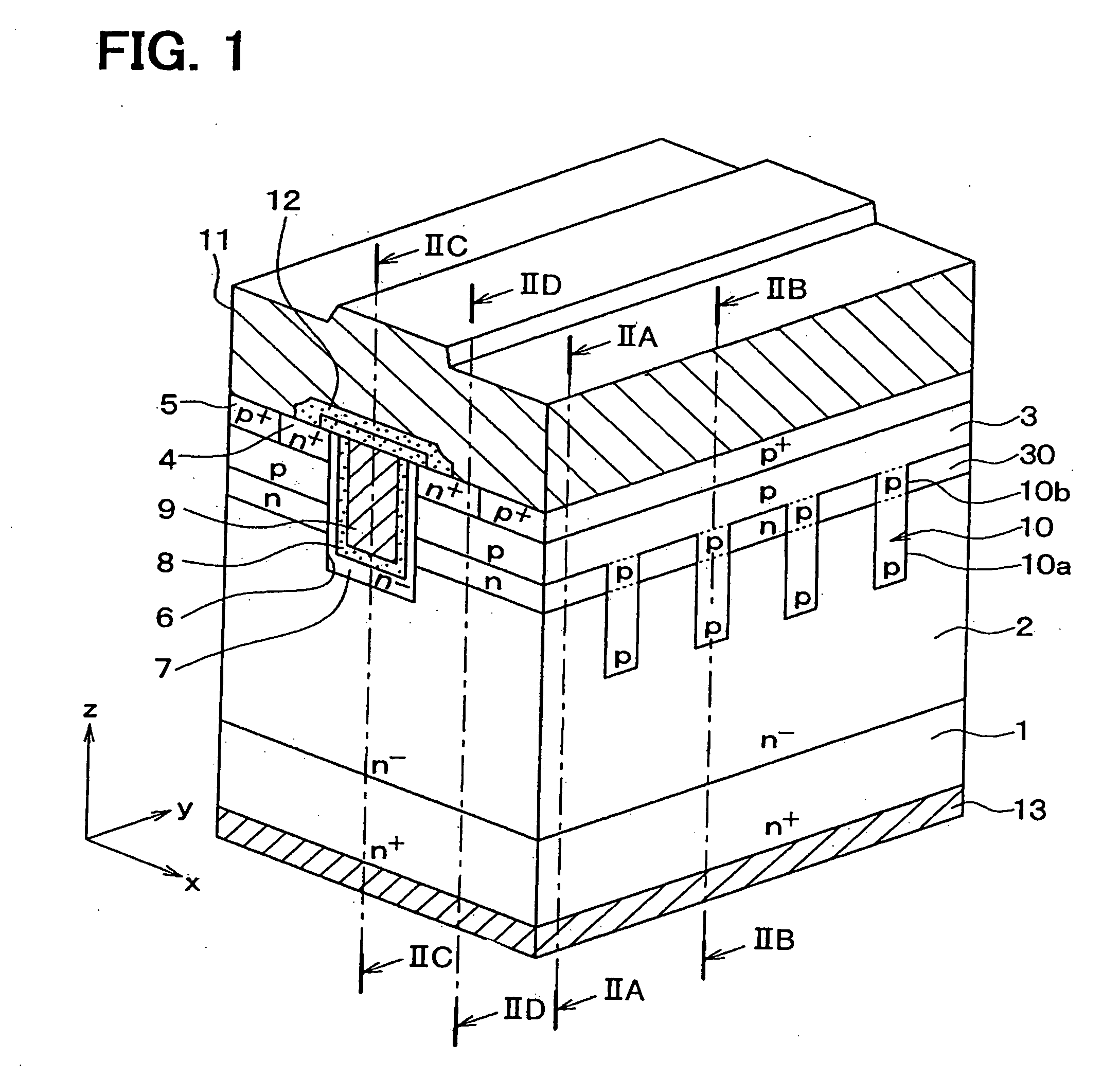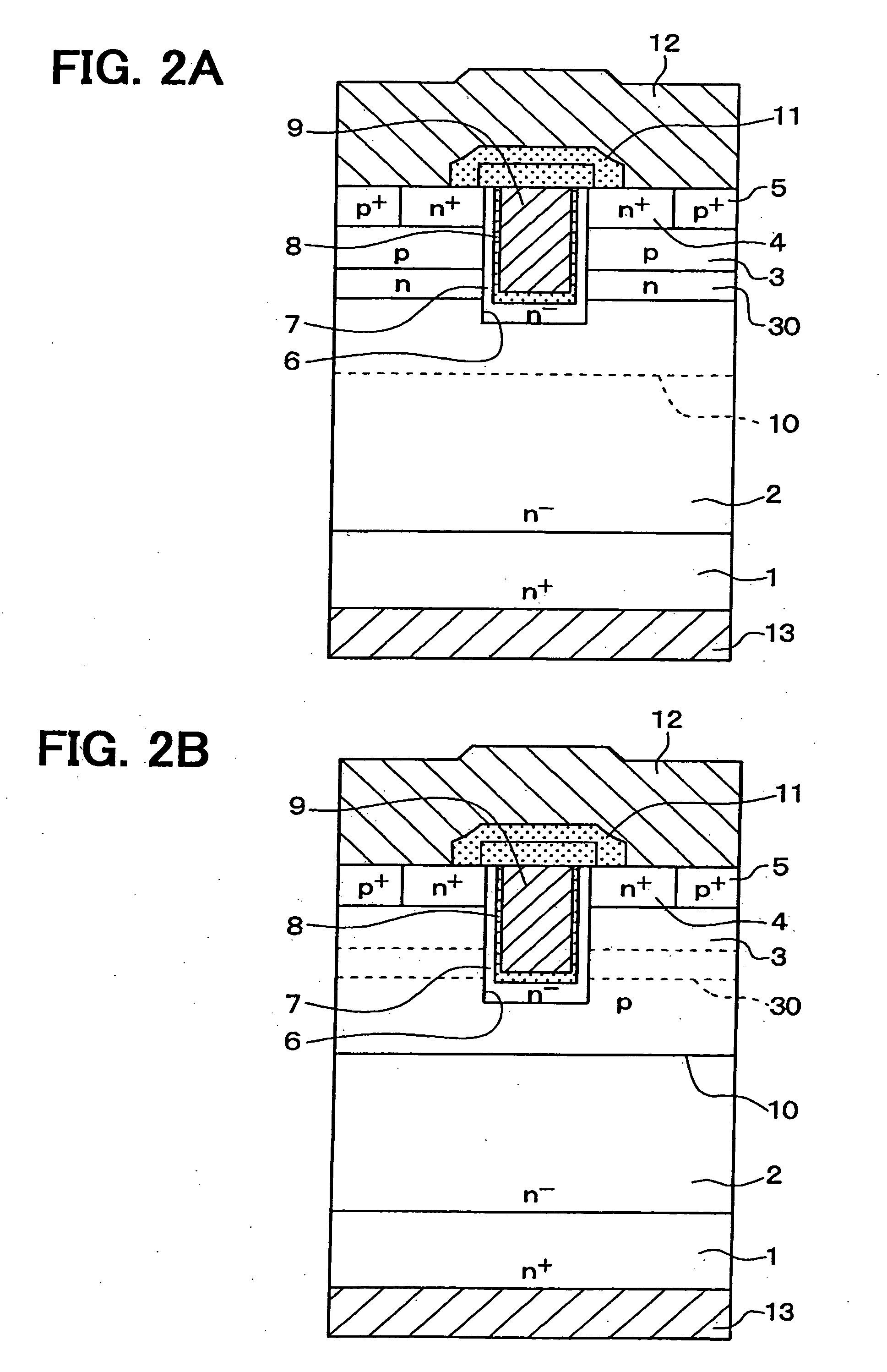Method of making silicon carbide semiconductor device
a technology of silicon carbide and semiconductor devices, applied in semiconductor devices, radio frequency controlled devices, electrical apparatus, etc., can solve the problems of insufficient reduction of electric field concentration, difficult alignment between trench gate and p-type deep layer, gate insulating film breakage, etc., and achieve the effect of reducing electric field concentration
- Summary
- Abstract
- Description
- Claims
- Application Information
AI Technical Summary
Benefits of technology
Problems solved by technology
Method used
Image
Examples
first embodiment
[0030]A first embodiment of the present invention is described. Here, an accumulation-mode trench-gate MOSFET is described as an element provided in a SiC semiconductor device.
[0031]FIG. 1 is a cross-sectional perspective view of a trench-gate MOSFET according to the present invention. This figure corresponds to one cell of the MOSFET. Although this figure illustrates one cell of the MOSFET, multiple MOSFETs, each of which has the same structure as the MOSFET shown in FIG. 1, are arranged adjacent to each other. FIGS. 2A-2D are diagrams illustrating cross-sectional views of the MOSFET of FIG. 1. FIG. 2A is the cross-sectional view taken along the line IIA-IIA in parallel to the xz plane of FIG. 1. FIG. 2B is the cross-sectional view taken along the line IIB-IIB in parallel to the xz plane of FIG. 1. FIG. 2C is the cross-sectional view taken along the line IIC-IIC in parallel to the yz plane of FIG. 1. FIG. 2D is the cross-sectional view taken along the line IID-IID in parallel to th...
second embodiment
[0074]A second embodiment of the present invention is described. A difference between the first and second embodiments is a relationship between the lower layer 10a and the upper layer 10b of the p-type deep layer 10. Since a basic structure is the same between the first and second embodiments, only the difference is described.
[0075]FIG. 11 is a diagram illustrating a cross-sectional view of a trench-gate MOSFET of a SiC semiconductor device according to the second embodiment. Portions of the second embodiment corresponding to the portions shown in FIG. 1 and FIGS. 2A-2C are almost the same as those of the first embodiment, and a portion of the second embodiment corresponding to the portion shown in FIG. 2D is different than that of the first embodiment. FIG. 11 is a cross-sectional view of the portion corresponding to the portion shown in FIG. 2D.
[0076]As shown in FIG. 11, a separation distance L2 between adjacent upper layers 10b is greater than a separation distance L1 between ad...
third embodiment
[0077]A third embodiment of the present invention is described. A difference between the first and third embodiments is a relationship between the lower layer 10a and the upper layer 10b of the p-type deep layer 10. Since a basic structure is the same between the first and third embodiments, only the difference is described.
[0078]FIG. 12 is a diagram illustrating a cross-sectional view of a trench-gate MOSFET of a SiC semiconductor device according to the third embodiment. Portions of the third embodiment corresponding to the portions shown in FIG. 1 and FIGS. 2A-2C are almost the same as those of the first embodiment, and a portion of the third embodiment corresponding to the portion shown in FIG. 2D is different than that of the first embodiment. FIG. 12 is a cross-sectional view of the portion corresponding to the portion shown in FIG. 2D.
[0079]As shown in FIG. 12, a width W2 of a bottom side of the upper layer 10b is less than a width W1 of the lower layer 10a, and a width W3 of...
PUM
 Login to View More
Login to View More Abstract
Description
Claims
Application Information
 Login to View More
Login to View More - R&D
- Intellectual Property
- Life Sciences
- Materials
- Tech Scout
- Unparalleled Data Quality
- Higher Quality Content
- 60% Fewer Hallucinations
Browse by: Latest US Patents, China's latest patents, Technical Efficacy Thesaurus, Application Domain, Technology Topic, Popular Technical Reports.
© 2025 PatSnap. All rights reserved.Legal|Privacy policy|Modern Slavery Act Transparency Statement|Sitemap|About US| Contact US: help@patsnap.com



